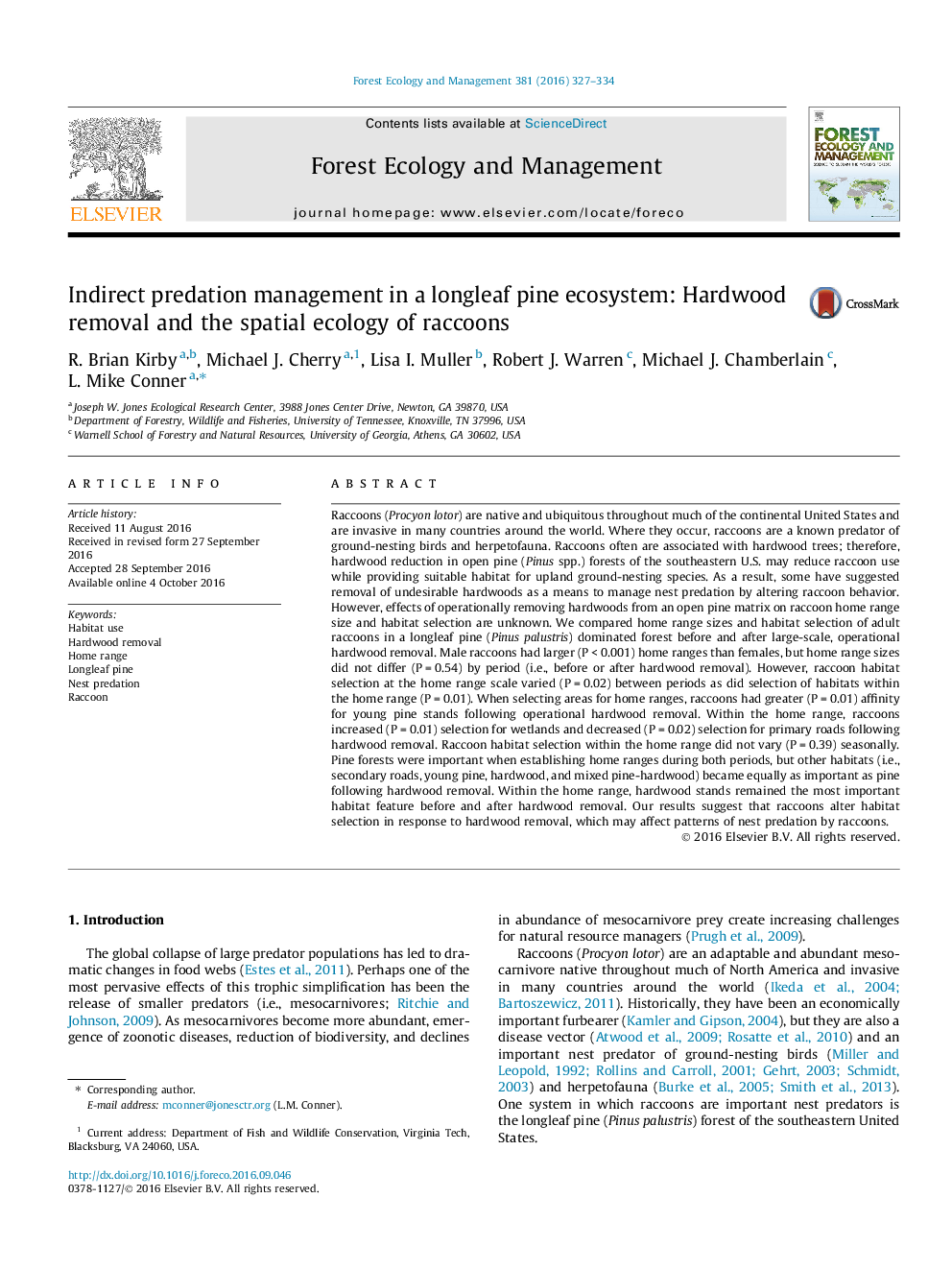| کد مقاله | کد نشریه | سال انتشار | مقاله انگلیسی | نسخه تمام متن |
|---|---|---|---|---|
| 6459583 | 1421377 | 2016 | 8 صفحه PDF | دانلود رایگان |
- Hardwood removal from open-pine dominated forests affected raccoon habitat selection.
- Raccoons selected young pine stands and wetlands more and roads less following hardwood removal.
- Hardwood removal may affect patterns of nest predation by raccoons.
Raccoons (Procyon lotor) are native and ubiquitous throughout much of the continental United States and are invasive in many countries around the world. Where they occur, raccoons are a known predator of ground-nesting birds and herpetofauna. Raccoons often are associated with hardwood trees; therefore, hardwood reduction in open pine (Pinus spp.) forests of the southeastern U.S. may reduce raccoon use while providing suitable habitat for upland ground-nesting species. As a result, some have suggested removal of undesirable hardwoods as a means to manage nest predation by altering raccoon behavior. However, effects of operationally removing hardwoods from an open pine matrix on raccoon home range size and habitat selection are unknown. We compared home range sizes and habitat selection of adult raccoons in a longleaf pine (Pinus palustris) dominated forest before and after large-scale, operational hardwood removal. Male raccoons had larger (PÂ <Â 0.001) home ranges than females, but home range sizes did not differ (PÂ =Â 0.54) by period (i.e., before or after hardwood removal). However, raccoon habitat selection at the home range scale varied (PÂ =Â 0.02) between periods as did selection of habitats within the home range (PÂ =Â 0.01). When selecting areas for home ranges, raccoons had greater (PÂ =Â 0.01) affinity for young pine stands following operational hardwood removal. Within the home range, raccoons increased (PÂ =Â 0.01) selection for wetlands and decreased (PÂ =Â 0.02) selection for primary roads following hardwood removal. Raccoon habitat selection within the home range did not vary (PÂ =Â 0.39) seasonally. Pine forests were important when establishing home ranges during both periods, but other habitats (i.e., secondary roads, young pine, hardwood, and mixed pine-hardwood) became equally as important as pine following hardwood removal. Within the home range, hardwood stands remained the most important habitat feature before and after hardwood removal. Our results suggest that raccoons alter habitat selection in response to hardwood removal, which may affect patterns of nest predation by raccoons.
Journal: Forest Ecology and Management - Volume 381, 1 December 2016, Pages 327-334
